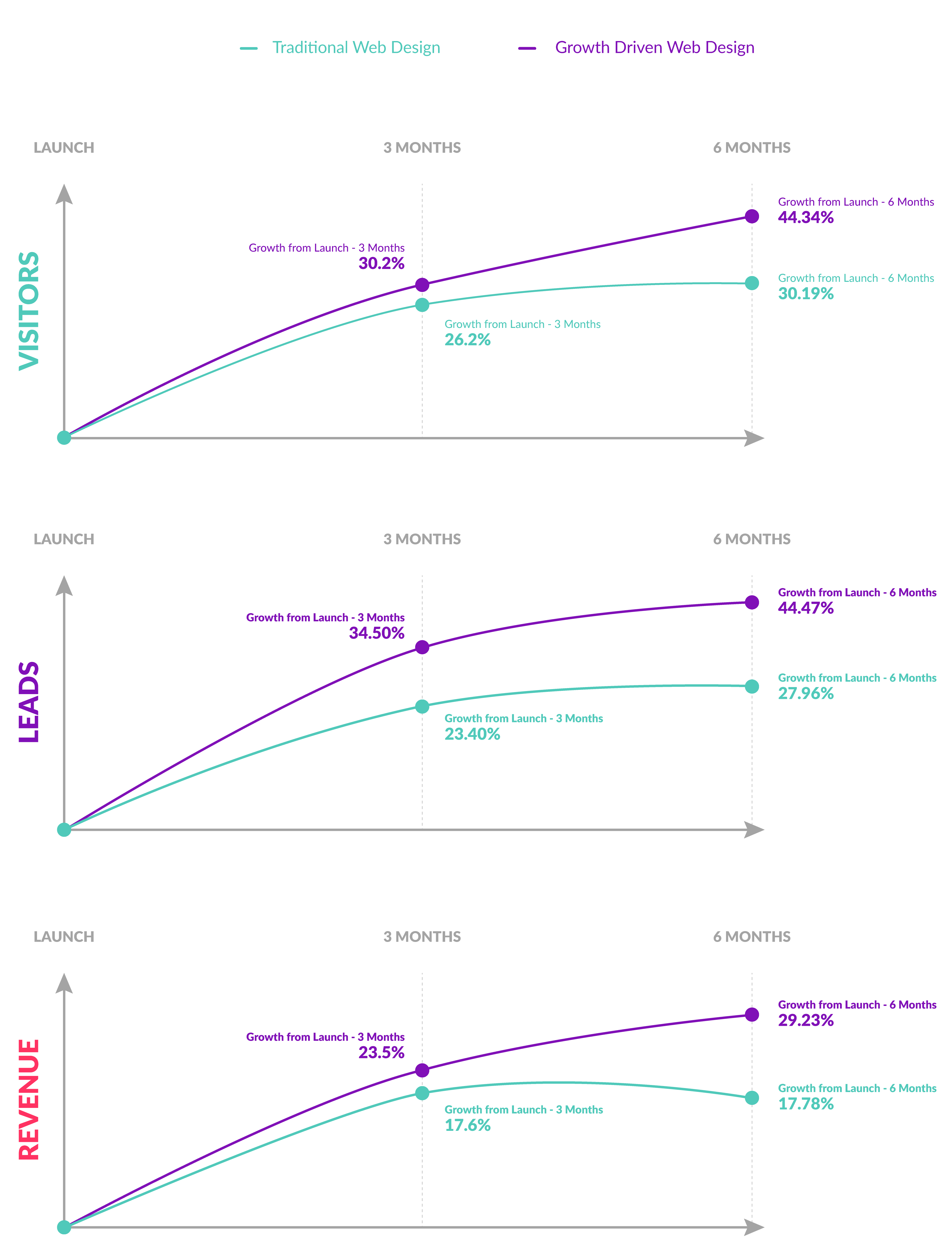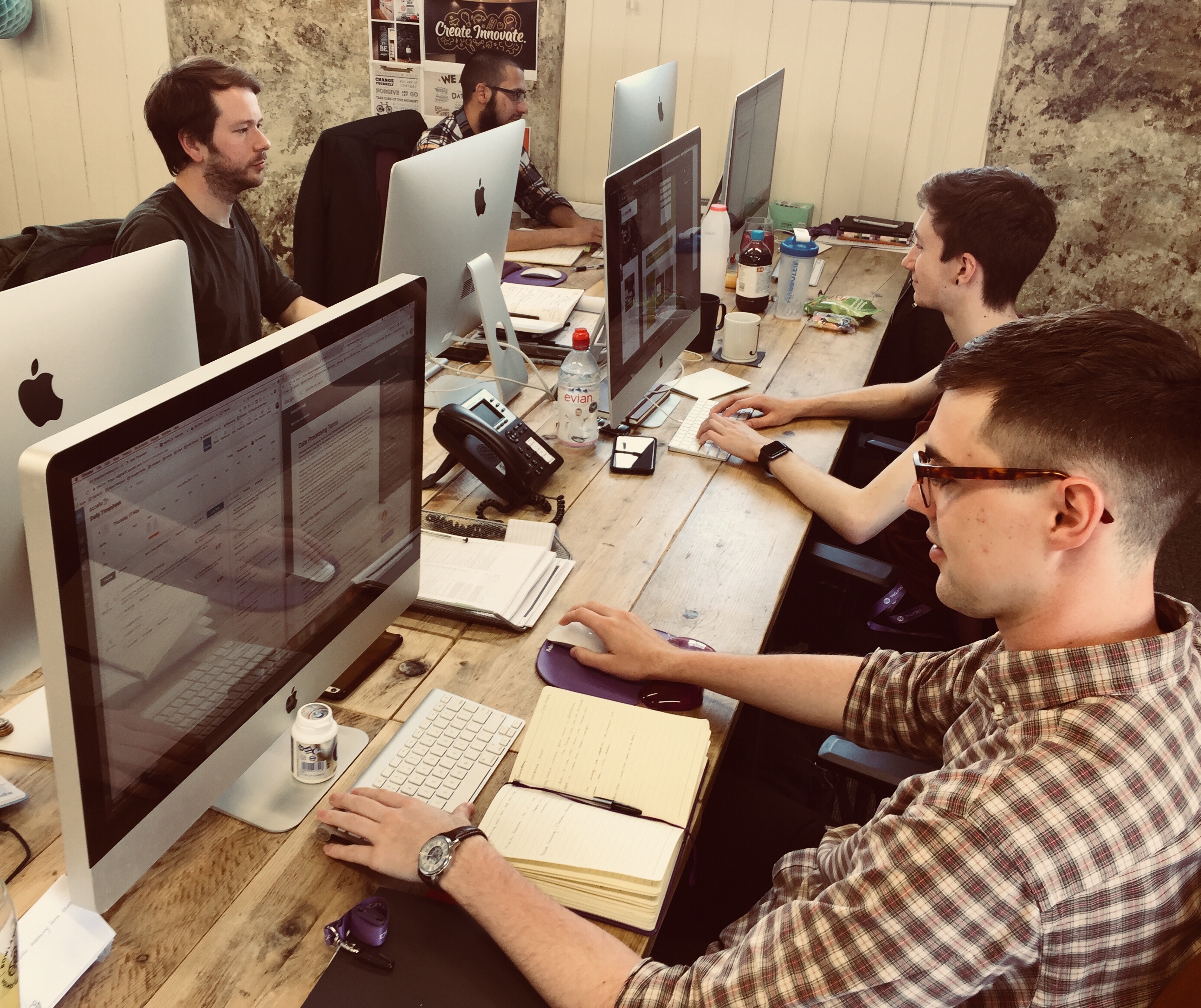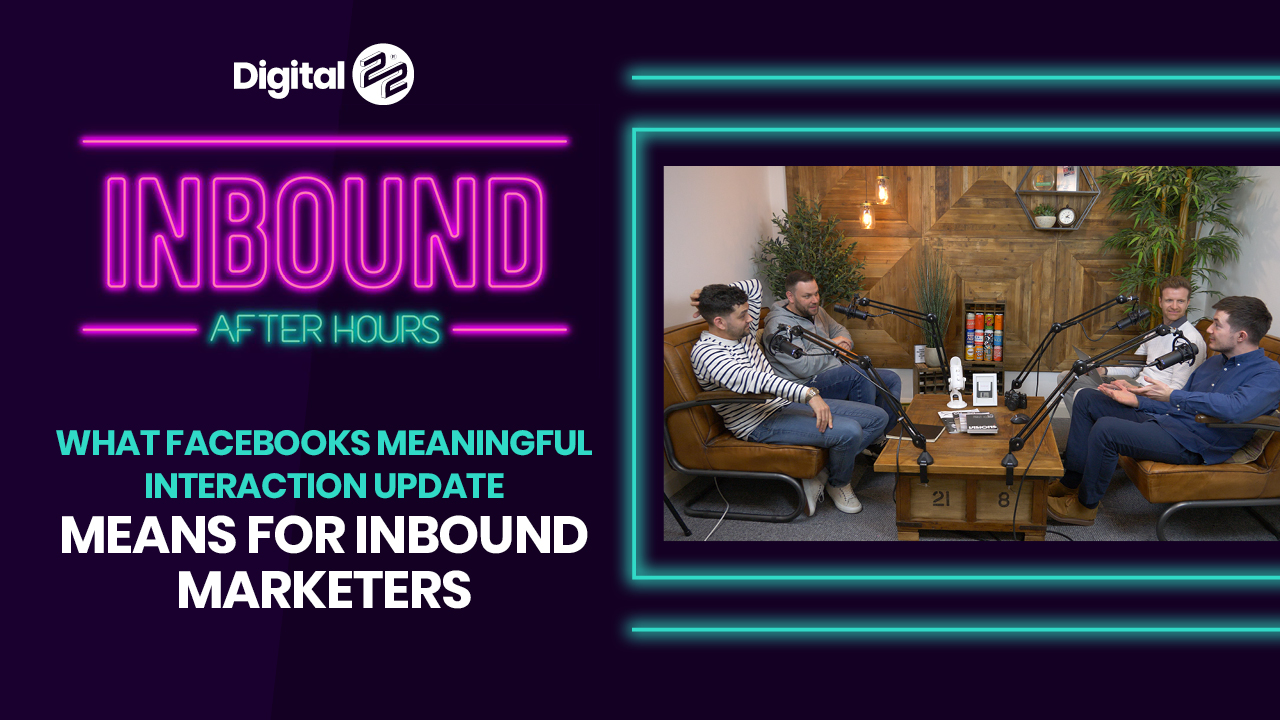Nobody can be blamed for wanting to dive into the deep end to create and publish a brand new...
Traditional web design vs. Growth Driven Design. On paper, it’s a fierce battle as some businesses simply refuse to budge from the former method as GDD is seen as a relatively new principle. That’s until they see the results that come with launching a website much quicker and continuously improving it over time, as opposed to leaving it for years on end. The first six months are crucial, and here’s precisely what goes down during that time.

The GDD Process: A Quick Rundown of the First Six Months
Although each stage of the GDD methodology or process can be broken down into much deeper sections, seeing what happens in the first six months is quite simple.
The strategy phase is where the blueprint is laid out and it only lasts around 10-14 days on average.
Following that, in the launch pad stage, a website is made live - which isn’t the final version - and it can last from anywhere between 30-90 days on average.
Following what will roughly be around three months into the GDD journey, the website then goes through the continuous improvement phase of the GDD process. Here, you’ll find that the rest of the six-month period is all about analysing data that you find and implementing the necessary changes to your website based on the user behaviour you’re collecting.
Essentially, you have a website up and running in three months at most. You’re making impactful changes for the rest of the six-month journey and beyond.
 GDD Impact Chart
GDD Impact Chart
The Six Month GDD Process in More Depth
Strategy: Roughly 10-14 Days
The most successful websites always begin with a focused growth strategy. If there’s no blueprint or plan to measure growth, then the website won’t be successful. It’s as simple as that.
The primary goal in the first two weeks or so is to develop an empathetic understanding of the audience, their world and how the website that’s going to be created will solve their problems along their journey.
During the first 10-14 days, the following needs to be completed:
- Set Clear Objectives: When there are clear objectives in place, you can avoid the headaches of a lethargic start with back and forth revisions that can go on for months. You’re able to build towards the desired results based on the growth plan you set out and you’re able to do it quickly.
- Keep it Customer Focused: When you understand your ideal customer pain points and needs, it puts you in a much better position to map out an effective customer journey. You can then use that data to shape the initial website with your ideal customer always in mind.
- Ready to Execute: It’s not all about planning at this stage. If anything, the latter stages of the strategy phase are you almost pulling the trigger on the launch pad website. By putting strategy before tactics, you’re able to take organised wishlist items you want on the website and turn them into an actional implementation plan.
Roundup of the first 10-14 days: You set SMART goals, solve design problems, understand user behaviour and make sure you connect with customers.
Launch Pad: Roughly 30-90 Days
The goal of the launch pad website is to quickly build a website that looks and performs better than your current website. However, it’s not the final product so it’s going to miss some elements that will be added later on. Think of it as the foundation from which you collect real user data and then use that to optimise the website.
Remember, the 30-90 day timeframe is a rough guideline. This process might be completed in 30 days or it could very well take the full 60 days. It all depends on the experience, the size of a team, how much data there is that needs to be collected and so on.
During the estimated one-to-three months for the launch pad website, the following needs to be completed during the six-month plan:
- Page Plans: Plan outlines and flows for each key page that’s going to be part of the initial launch. Make an extra effort to address SEO objectives as well as user needs.
- Rapid Prototypes: During content creation, focus on building out page flows into a wireframe that’s already designed. When you have content ready before designing the website, the design process goes much quicker and smoother rather than going back and forth.
- Design Sprint: When page prototypes are in place, the new design can sometimes be completed as soon as a week, depending on the size of your team, workload and feedback. After that, you can gather feedback and make changes before settling on the final design.
- Finish Sprint: Make sure everything is in place. This includes metadata, speed testing, screen recording technology, insert all links and more.
- Page Migration: Your sprints during this time are evidently going to focus on the handful of pages that are going to drive the biggest impact. However, it’s also important to give a new look to the rest of the website while you migrate it into the new website.
- Don’t Compromise Speed Over Quality: Although one of the primary benefits of GDD is getting a website out quickly, speed shouldn’t compromise the quality of the overall website. Here, you need to make sure the website is of a high enough standard to provide user value.
This time period also focuses on running an 80/20 analysis on your wishlist items that you want to implement, creating hypothesis statements for them, investing in internal efficiencies and more.
Roundup of the 30-90 day period: There’s a two-three month build period, the budget is saved for optimisation, you launch on-time and on-budget and there’s a faster time to value. You’re also able to validate assumptions quicker and make data-driven decisions.
-1-1.webp?width=600&name=gdd-methodology-steps%20(1)-1-1.webp) GDD Methodology
GDD Methodology
Continuous Improvement: Roughly 90 Days-6 Months Onwards
The remainder of the six months and even beyond those six months are spent on optimising the new website using real user data. It’s about refining the content and designs after analysing data so that you can’t only see the changes that need to be made but also implement them right away.
When the launch pad website is live around 30-90 days after the GDD process begins, you can now begin to collect data and identify the high impact actions you can take to grow your business.
At this stage, your team works in sprint cycles which can be from anything between a 14-day sprint cycle to a month-long sprint cycle depending on how many wishlist items have been chosen. For each item, you need to go through the sprint cycle - plan, build, learn and transfer. This is a cycle that repeats itself for every item that’s been picked. The faster your team moves through the cycle above, the sooner they drive results for your business and your users.
During the remainder of the six months and beyond, the following factors are looked at during the sprint cycles:
- Audience: Verify that you have a consistent flow of organic visitors for testing and hitting goals.
- Value: Make sure you’re creating real value for your users.
- Usability: Make sure that your users can find the value as early as possible and leave your website feeling happy.
- Conversion Rate Optimisation: Analyse any friction points on your website to reduce them, resulting in a much smoother user experience.
- Stickiness: Make sure visitors come back to solve their pain points on your website.
- Personalisation: Provide a personal experience for the users based on their persona type or their lifecycle stage.
- Assets: Make sure you create resources and tools which are producing leads.
- Promoters: Try to find ways in which to get your users to tell other people about your website.
Roundup of the remaining six months of the GDD process: Here, your team needs to continuously collect user data, analyse their behaviour and make the necessary changes to the website to generate more momentum.
Six Month Growth Examples of GDD
The whole point of a brand new website is to get the results you need. This is where the traditional web design method falls short as it features a frustrating 3-6 months (and in some cases longer) design period. As it’s based on assumptions, the website is let down as there’s no data and the next redesign happens years down the line.
With the GDD principle, you get results even in the first six months of the process. As it’s an agile process, you’re able to always improve and that’s what drives results - as you can see below.
 Growth Driven Design Graphs
Growth Driven Design Graphs
Get Even More Information on the Entire GDD Process
Believe it or not, all of the above was a brief look at the first six months of the Growth Driven Design process. There’s still a lot of useful information to soak in and implement towards a brand new website to drive optimal results.
Although it can be a lot to take in right away, we’ve made your life much easier. To help you gain a better understanding of the whole GDD process, we’ve created a helpful guide. While that's getting ready, why not join our private Facebook Group? We created Inbound After Hours to connect with like-minded individuals to discuss all things Inbound Marketing and GDD. Just click on the link below to join the group.



